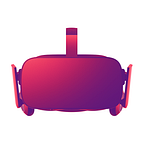Add Another Buzzword to Your Mixed Bag: Welcome to Spatial Computing
When people ask me what the most exciting thing is about immersive technology, what the biggest change will be in the next 5–10 years, my answer is almost always the same: say goodbye to your screens.
The potential for virtual reality to transform entertaining is staggering; the chances that augmented reality will have lasting impacts on education is real; mixed reality has already begun to leave its mark on training and industry. But the simplest change, the one that all of the *realities are targeting, is that fixed square in front of your face. The world exists in three hundred and sixty degrees, and we want to be able to explore them all. Tired of neck strain from staring at your computer? Lie down on the floor for a bit, and bring your display with you. Got pains from typing? Don’t we all.
Given that immersive realities are, at the end of the day, a new way of computing, why not call them by the same name? Welcome to spatial computing, a much more elegant (and business-focused) catch-all term. It’s such a new idea that Wikipedia doesn’t yet have an entry for it, but a workshop happening in DC provides this excellent descriptor: “Spatial Computing is a set of ideas and technologies that will transform our lives by understanding the physical world, knowing and communicating our relation to places in that world, and navigating through those places.”
Why does spatial computing sound better than immersive reality? Because it defines what the technology is, rather than what it does. Immersive reality is a descriptor of what we want the technology to accomplish. It creates a world we can dive into, a world that is truly captivating. But arguments can be made that other forms of media are equally immersive. How about a play that takes place all around you? Or a parade? Are these not immersive? Spatial computing, on the other hand, describes what the technology is. It’s a computer that relies on spatial interaction instead of flat interaction.
Colour me convinced. Spatial computing is the term of the future — now we just have to get companies’ PR machines on board.
— —
written by Wren Handman for Hammer & Tusk.
